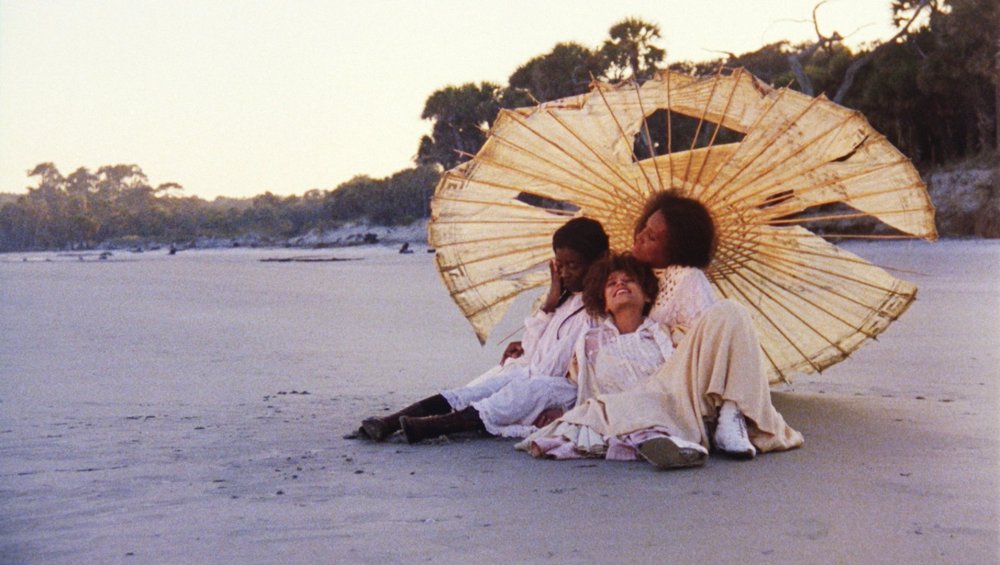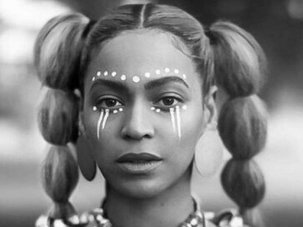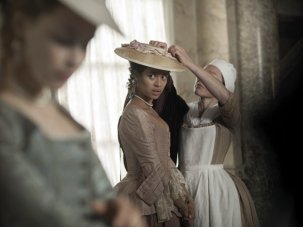Julie Dash started making notes for Daughters of the Dust in 1975, while she was a fellow at the American Film Institute. Originally conceived as a silent short with intertitles, over the years the idea evolved into a feature. Daughters of the Dust was finally knitted together out of love and determination almost palpable in its glowing, varied textures and use of many languages.

Daughters of the Dust is rereleased at UK cinemas from 2 June 2017.
The Sight & Sound Deep Focus season Unbound: Visions of the Black Feminine runs through June 2017 at BFI Southbank, London.
It draws not only on the Gullah dialect, the West African-derived language of the islands, but on a vocabulary of physical gestures – from the secret signing that the men practise together to the games of the children in their white linen frocks as they kick sand on the beach. And John Barnes’ sweeping score provides another level of dense meaning. This is balletic, operatic cinema, and a celebration of cinema itself. Mr Snead the photographer brings a kaleidoscope to the island with him; rather than a record of images taken by a camera, Daughters of the Dust is filmed through that magical kaleidoscope. Arthur Jafa’s sensuous cinematography is vibrant with colour and movement – as in the slow-motion image of a young girl leaping, her braided locks tossed in the air.
Daughters of the Dust sets out to revoke the colonial history that has obscured the Peazant family. It is a rites-of-passage story that summons myriad rituals and traditions, from Islam, Christianity and the West African spiritual customs that the reformist Haagar describes as Nana’s “voodoo mess”, to the preparing and eating of gumbo.
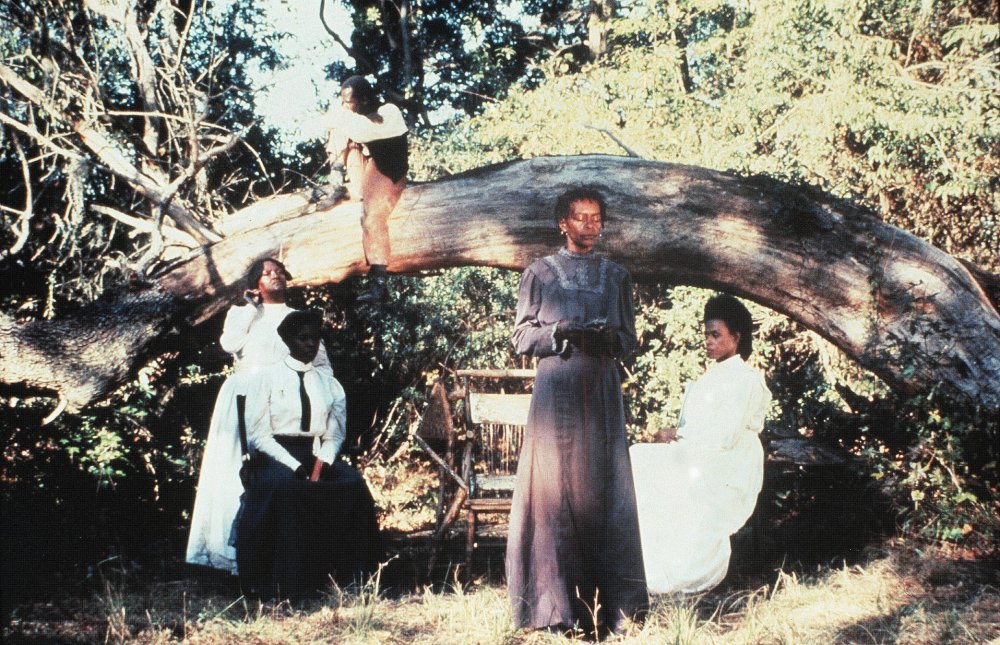
But the film itself also has a formal grace that is moving and profound. It is structured around the twin narratives of Nana, who remembers her mother being taken away into slavery, and that of the gambolling Unborn Child, a strategy which folds in the old with the new. These two voices circle the story. Indeed, from Nana’s opening incantation – “I am the first and the last… I am the silence that you cannot understand. I am the utterance of my name” – Daughters of the Dust establishes this notion of interweaving and contradiction out of which new meanings emerge. This extends to the resolution: there is no right or wrong choice governing the decision to leave the island – Nana’s and Haagar’s arguments are given equal weight.
The film also transforms narrative in its storytelling technique. The history of the Peazant family, which is typical of the Gullah families, is told through snatches of conversation between the women, who are all, like Nana, eloquent guardians of their culture. They tell of the mythical lbo landing, in which a boat-load of West Africans were said to have walked home over water rather than be taken captive; or of the reasons for children being given names such as Myown and Iona (I own her).
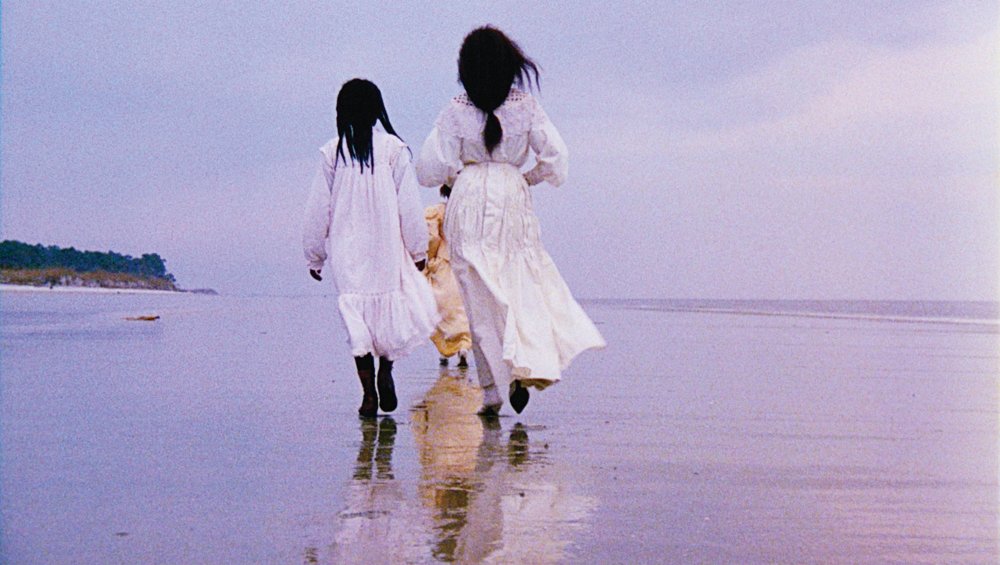
And there are accounts of suffering – the rape of Eula by a white landowner signifies the manifold rapes in the African-American’s history of captivity, while Eula’s refusal to tell Eli the identity of the perpetrator is condoned by the other woman on the grounds that “there is enough uncertainty in life without worrying which tree your husband is hanging from.” Yellow Mary’s recollection of losing her own child and of wet nursing for a white family traces another narrative of bereavement. But Daughters of the Dust is about how the Peazants resisted victimisation. They bear scars from the past – “but we wear scars like armour for protection”. They are the children of “those who choose to survive”.
Dash does not avoid examining the conflicting desires of those survivors. Viola and Yellow Mary, who both left for the mainland to escape their past, each have to deal with their own cultural legacy. Primly garbed in her navy serge suit and hat, the Baptist Viola zealously sets out to educate and convert her family. In contrast, Yellow Mary, a ‘new woman’ who has found financial independence in prostitution, arrives swathed in white dress and veil, emerging from the foamy sea like a goddess.
Their sojourn on the island transforms them. Viola loosens up, embracing her past by kissing Nana’s talisman and recognising her sexuality by kissing Mr Snead. Yellow Mary chooses to stay with Nana rather than make the planned voyage to Nova Scotia with her girlfriend Trula; the family home pulls her like the incoming tide. Indeed, Daughters of the Dust calls up the elemental rhythms of the wind and the sea and transports the audience to new shores.
Daughters of the Dust (director’s clips)
In the June 2017 issue of Sight & Sound
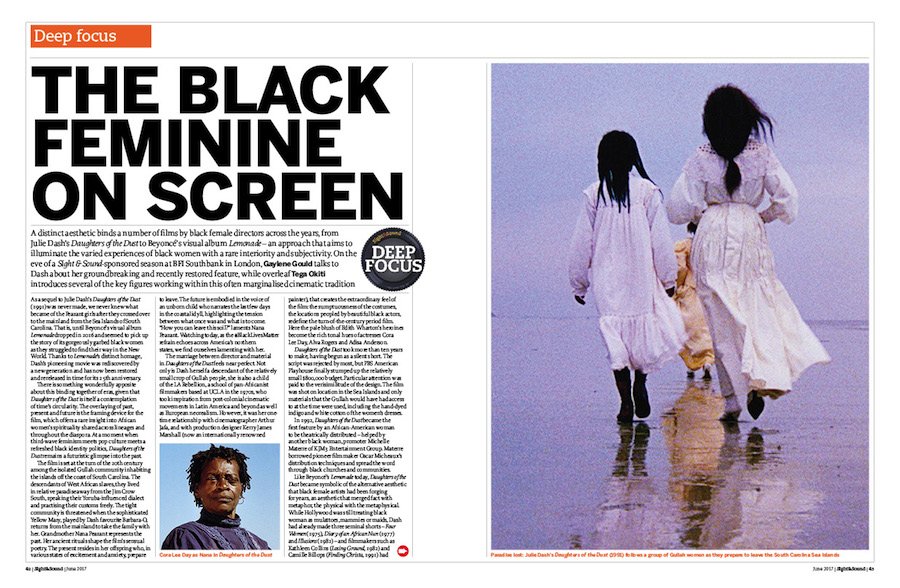
Deep focus: The black feminine on screen
A distinct aesthetic binds a number of films by black female directors across the years, from Julie Dash’s Daughters of the Dust to Beyoncé’s visual album Lemonade – an approach that aims to illuminate the varied experiences of black women with a rare interiority and subjectivity. On the eve of a Sight & Sound-sponsored season at BFI Southbank in London, Gaylene Gould talks to Dash about her groundbreaking and recently restored feature, while overleaf Tega Okiti introduces several of the key figures working within this often marginalised cinematic tradition.
→ Buy a print issue
→ Access the digital edition
→
Also in the September 1993 issue of Sight & Sound
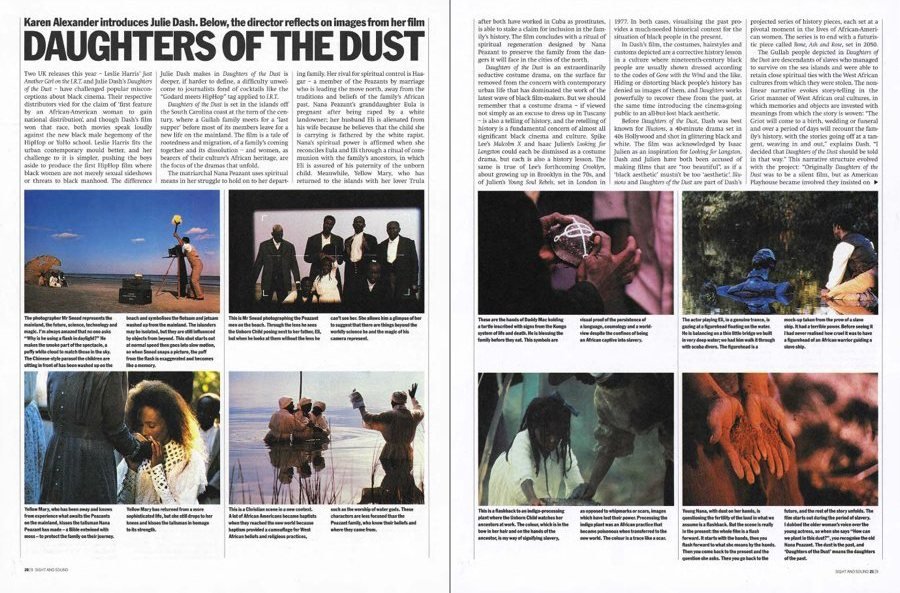
Daughters of the Dust
Karen Alexander introduces Julie Dash – who reflects on eight scenes from her film.
-
The Digital Edition and Archive quick link
Log in here to your digital edition and archive subscription, take a look at the packages on offer and buy a subscription.




